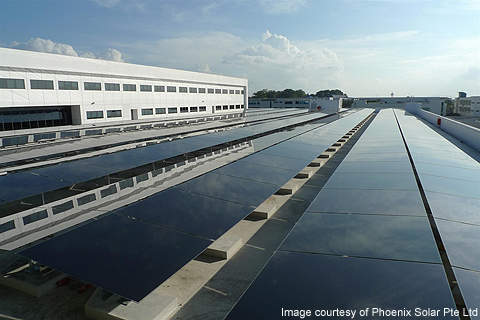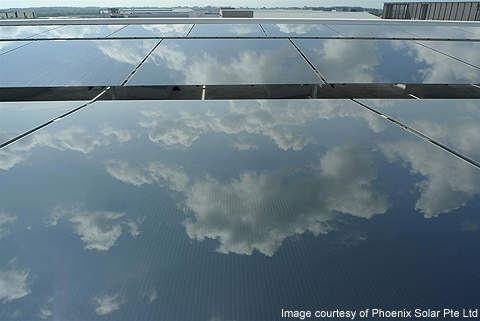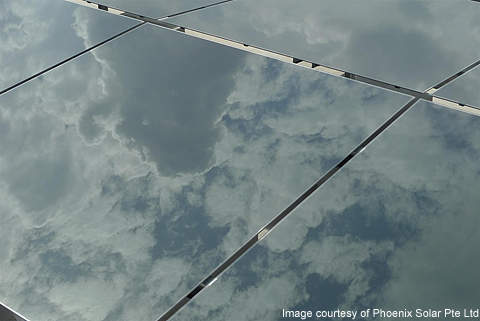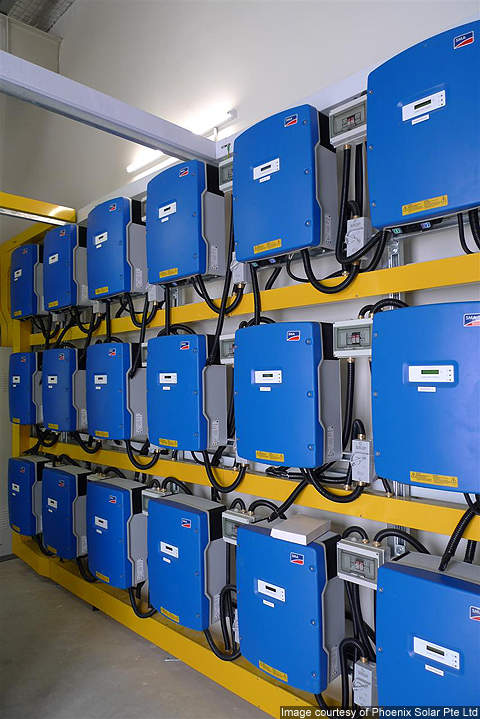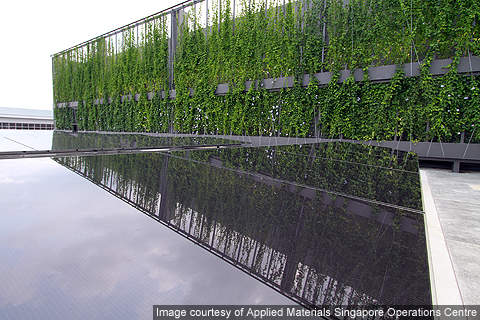The Singapore subsidiary of Germany-based Phoenix Solar has designed and built Singapore’s biggest thin film photovoltaic (PV) plant near Changi North Industrial Park. It is also the largest installation of 5.7m2 tandem junction PV panels in the world.
The plant is installed on the rooftop of a new 32,000m² factory building of Applied Materials’ Singapore Operations Centre. The project was accepted by Applied Materials, a provider of nano-manufacturing technology, on 14 April 2009 and was connected to the grid in March 2010. It was inaugurated on 13 April 2010.
The plant has an installed capacity of 400kWp and generates 500,000kWh of electricity every year. It is sufficient to power 100 four-room apartments and offsets carbon emissions of approximately 250,000kg each year.
The new building was awarded ‘Green Mark Platinum’ by Singapore’s Building & Construction Authority (BCA).
Singapore’s thin film plant details
The PV plant is a grid connected system and does not require batteries to store solar power.
The plant was built with the help of 380.74kWp large-scale tandem modules. Each thin film module is 8mm thick, measures 2.2m by 2.6m and weighs 105kg. With a surface area of 5.7m², these modules are the largest and most powerful mass-produced solar module in the world. They can be installed in less time and cost, as they reduce the use of module clamps and cable connections.
The solar PV modules were manufactured in Germany by Sunfilm and ENN Solar in China, based on the latest SunFab thin film technology, developed by Applied Materials. This technology can be used either for single junction (amorphous silicon) or tandem junction (amorphous / micro crystalline silicon stack) thin film PV modules. It has a 25-year power output warranty.
In addition to the 380.74kWp tandem junction modules, the plant has 4.8kWp semi-transparent thin-film BIPV modules in four roof skylights, and 14.4kWp multi-crystalline modules, which increase the plant’s peak output to 400kWp.
Building integrated photovoltaic (BIPV) modules use ASITHRU PV laminates supplied by the German company Schott Solar, which come with a ten-year power output warranty. BIPV modules reduce the envelope thermal transfer value (ETTV) of the building, resulting in less energy demand of the building. They can be customised to match the building façade’s design.
PV modules convert sunlight into DC electricity proportional to the light intensity. An inverter converts the DC current into AC current and feeds to the building’s main power supply. Thus, the building has parallel power supplies – the PV and grid – without any changeover switch.
Low e-glass curtain walls and a rainwater re-cycling system installed at the plant will help to save 30% energy.
Thin film technology
SunFab thin film tandem technology has a high conversion efficiency and low cost per watt compared with single junction technologies. This technology combines amorphous and micro crystalline layers to absorb long and short wavelengths of sunlight, reducing the per-unit cost of production.
A SunFab thin film tandem junction plant can manufacture 80MWp of modules per year. It is highly scalable and can be used for capacities up to 1GW.
Singapore power market
Singapore is an island with limited energy resources. Around 80% of oil and gas is imported from Indonesia and Malaysia to generate electricity.
A sub-committee under the Economic Strategies Committee has suggested making Singapore a smart energy economy to ensure an adequate and consistent supply of power to the island.
Singapore is planning to be a $1.7bn clean energy industry by 2015. It has set a target to reduce carbon emissions by 25% by 2012 compared with its 1990 levels.
As a part of this plan, the Singapore Economic Development Board announced on 25 May 2010 to invest SGD700m ($500m) for R&D and manpower training to build a clean technology ecosystem over next five years. It has set a target to raise the energy efficiency goal by 35% and recycling rate to 70% by 2030.

